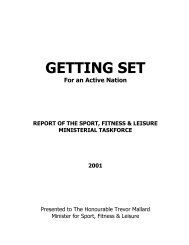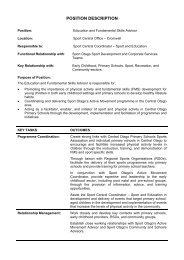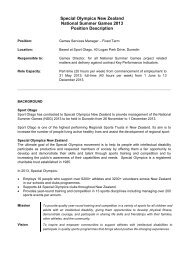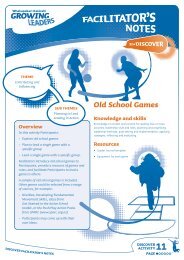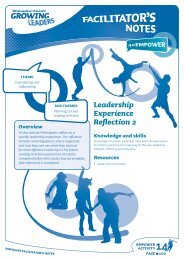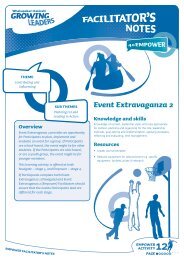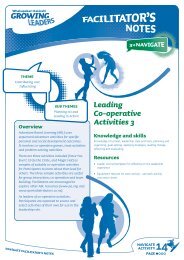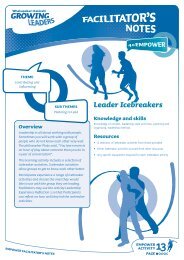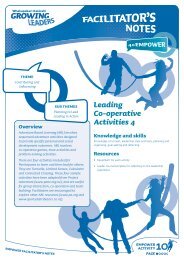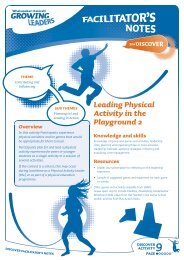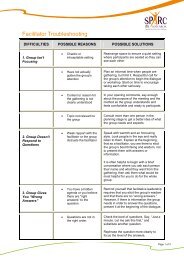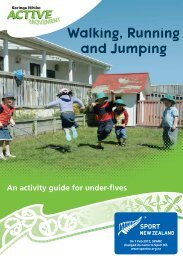An Introduction to Active Movement Koringa Hihiko - Sport New ...
An Introduction to Active Movement Koringa Hihiko - Sport New ...
An Introduction to Active Movement Koringa Hihiko - Sport New ...
Create successful ePaper yourself
Turn your PDF publications into a flip-book with our unique Google optimized e-Paper software.
SECTION F<br />
31<br />
Increasing <strong>Active</strong> <strong>Movement</strong> Complexity<br />
For young children <strong>to</strong> learn, acquire and grow in <strong>Active</strong><br />
<strong>Movement</strong>, fundamental movement skills begin with the<br />
simple and gradually become more complex. This allows<br />
time for the body/brain systems <strong>to</strong> develop and strengthen.<br />
For example: Learning <strong>to</strong> catch progresses from the many<br />
opportunities a baby has in tracking a moving object on<br />
their fronts, backs and sides, watching and following a<br />
hanging ball or poi, learning <strong>to</strong> bounce, pat, and catch<br />
a large balloon, a beach ball, before experiencing a one-onone<br />
catching situation with a large soft ball with an adult.<br />
Problem solving (the brain’s favourite activity) in <strong>Active</strong><br />
<strong>Movement</strong> for the older child develops new awareness<br />
of how the body works and the effects it has on the<br />
exploration of skills. Having knowledge of each fundamental<br />
movement skill and how it develops is essential for<br />
encouraging problem solving.<br />
For example: Learning two-foot jumping – Can you jump<br />
using no arms, one arm, swinging arms up, head and eyes<br />
down? What happens if you carry a weight? Jump on<br />
different surfaces? When performing a takahia, how do you<br />
create the loud stamp?



